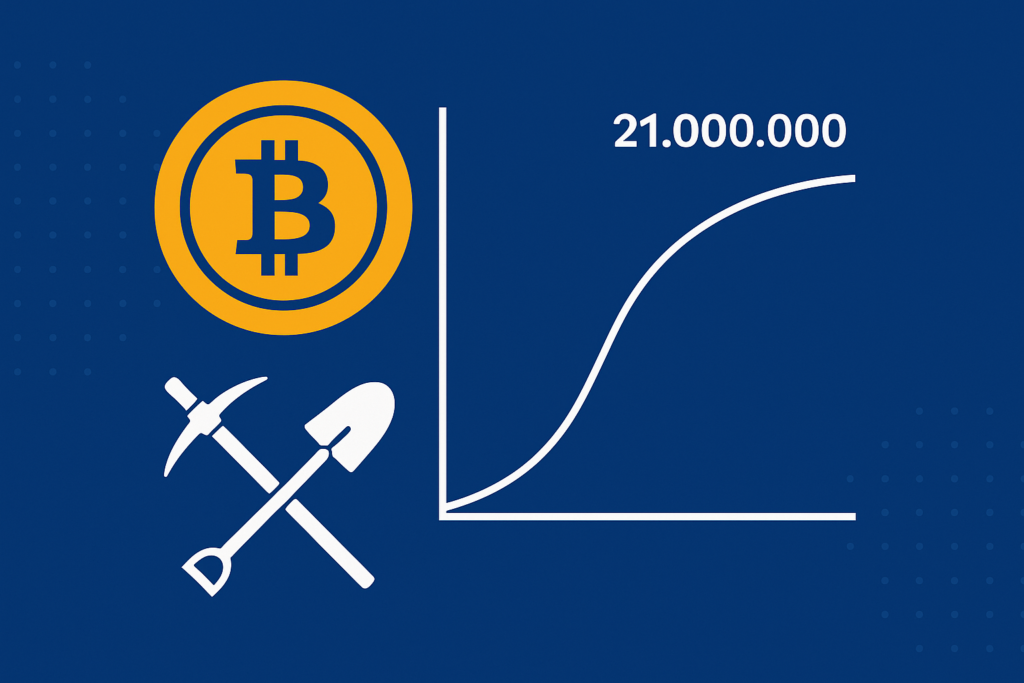
How Many Bitcoins Are There in 2025 & What Does It Means for You?
How Many Bitcoins Are There Right Now?
As of 2025, there are about 19.93 million bitcoins in circulation — roughly 94.9% of the 21 million maximum supply.
That leaves just over 1 million BTC still to be mined, a process that will continue slowly until around the year 2140.
Why Bitcoin’s Supply Is Limited
Bitcoin was designed with scarcity in mind. Its creator, Satoshi Nakamoto, hard-coded a maximum supply of 21 million BTC into the protocol. This fixed cap is one of Bitcoin’s defining features and is often compared to the scarcity of gold.
Unlike fiat currencies that can be printed, Bitcoin’s supply cannot be inflated — making it attractive as a potential store of value.
Why Bitcoin’s Limited Supply Matters for Investors
A finite supply creates scarcity, which can support long-term demand — but supply alone doesn’t dictate price. Factors that influence Bitcoin’s value include:
- Demand & adoption: companies, institutions, and individuals buying BTC
- Mining costs: the expense of securing the network
- Competition: from other cryptocurrencies
- Regulation: global policy changes can drive or dampen demand
Some investors see Bitcoin as digital gold, useful as a hedge against inflation, while others point to its volatility and evolving role in the financial system.
The Future of Bitcoin
The final bitcoin won’t be mined until 2140, but in the meantime, adoption continues to grow:
- Public companies and funds are adding BTC to balance sheets
- Retail adoption is increasing, with more merchants accepting crypto
- Regulators worldwide are formalizing crypto frameworks
While no one can predict Bitcoin’s exact role in the future economy, its fixed supply ensures it will always remain unique among assets.
Don’t forget to follow us on X, LinkedIn,Telegram, Instagram and Facebook to stay updated with breaking crypto news, market insights, and key developments as they happen.
Frequently Asked Questions (FAQs)
How many bitcoins are there right now?
As of September 2025, ~19.93 million BTC are in circulation.
How many bitcoins are left to mine?
Just over 1 million BTC remain, released gradually until 2140.
How many bitcoins are lost forever?
Studies estimate between 3 and 4 million BTC are permanently lost.
Will there ever be more than 21 million bitcoins?
No. The Bitcoin protocol caps supply at 21 million BTC.
When will the last bitcoin be mined?
The final fraction of BTC is expected around the year 2140.

